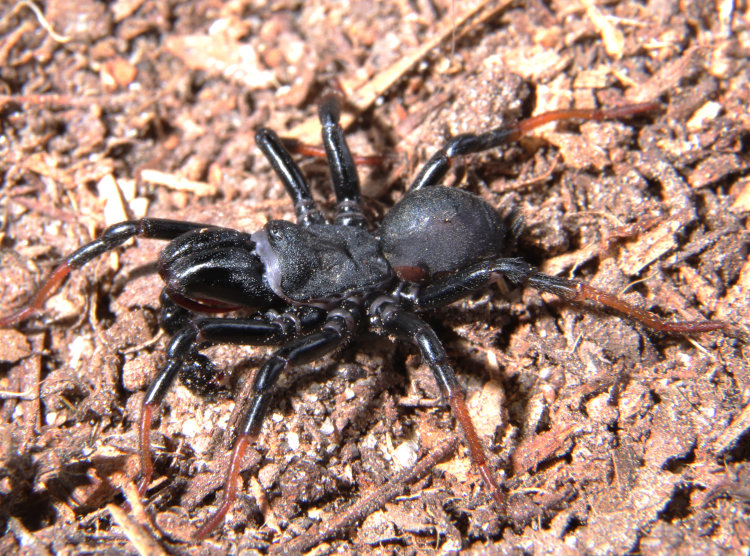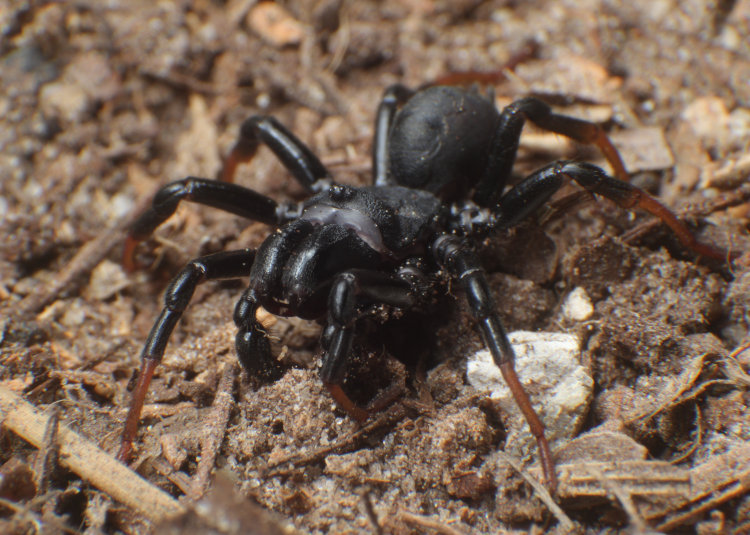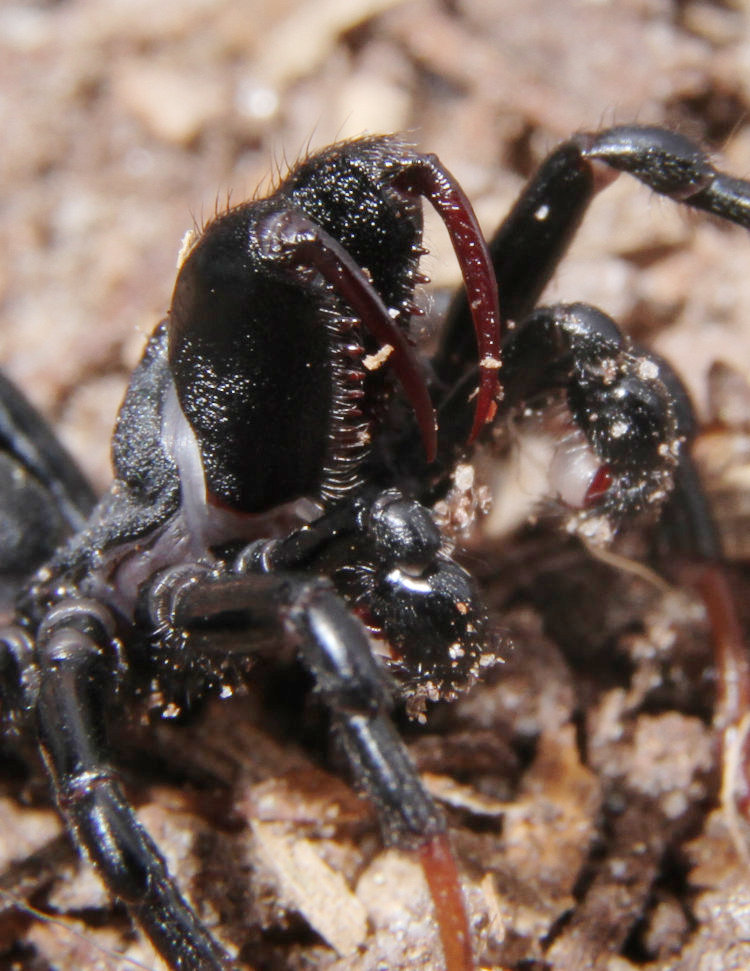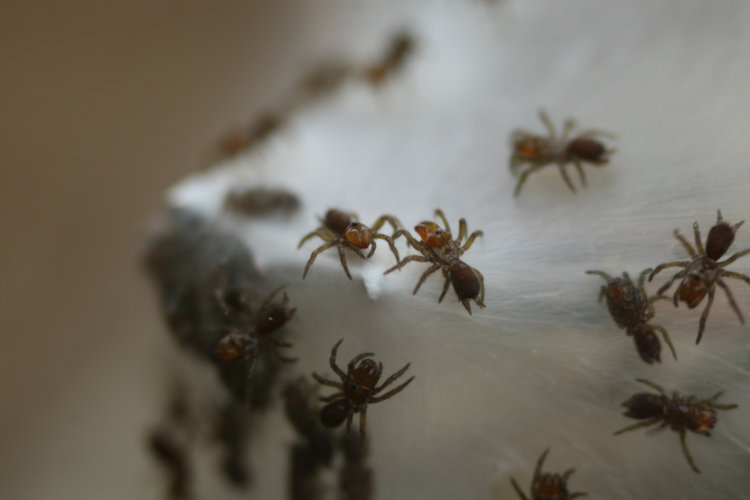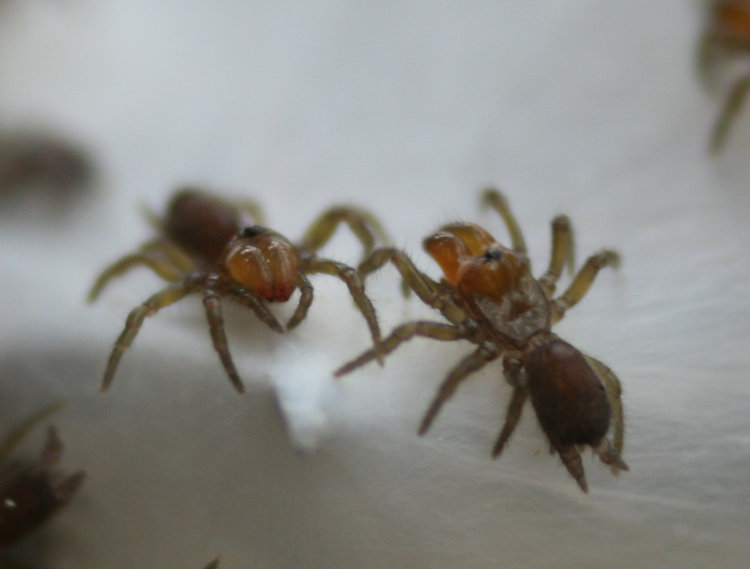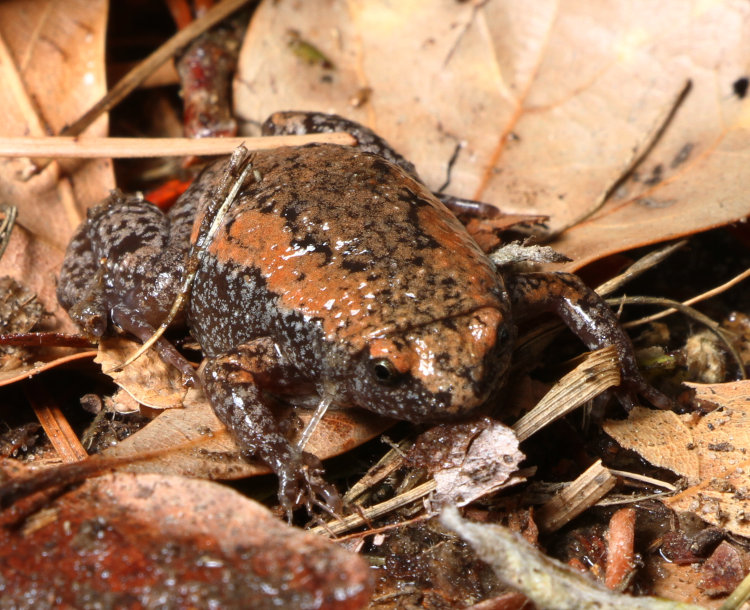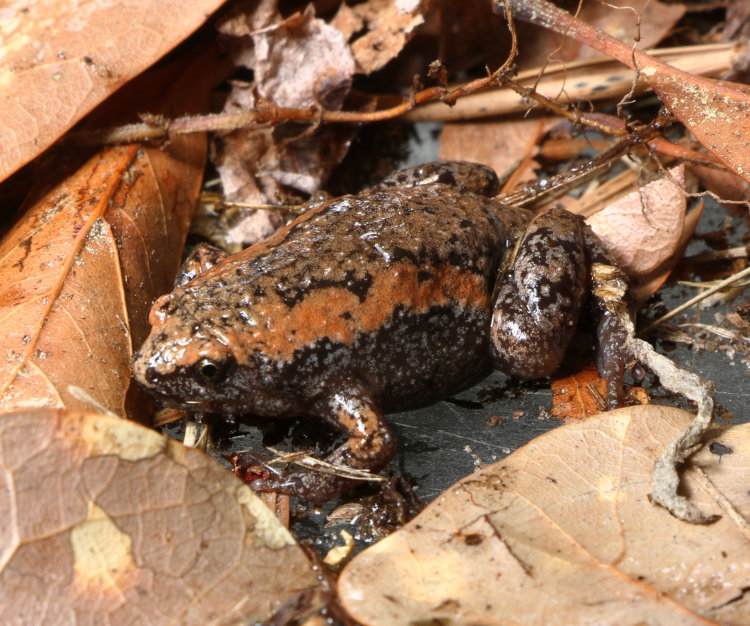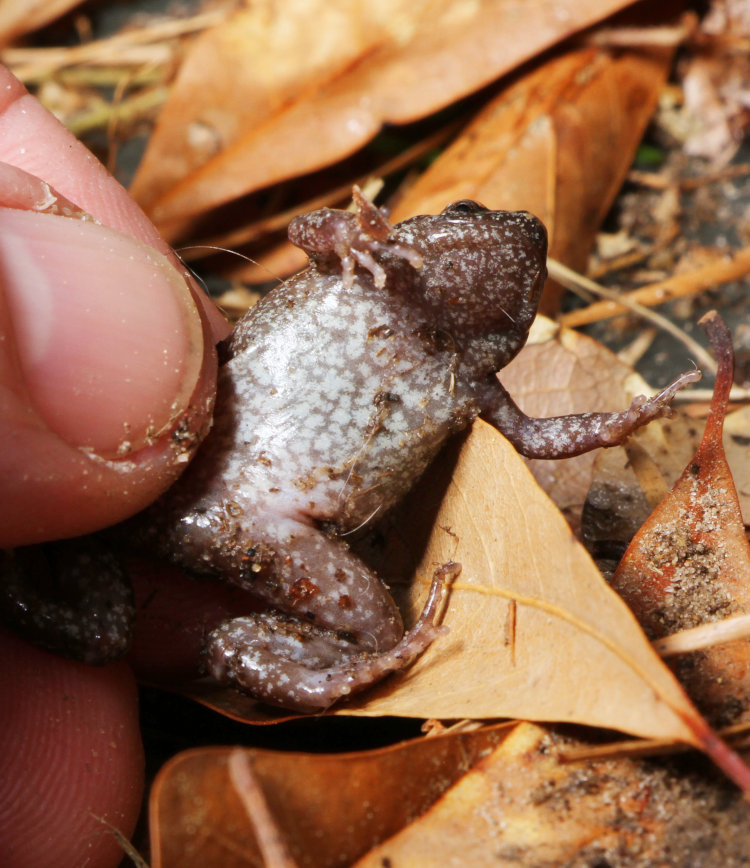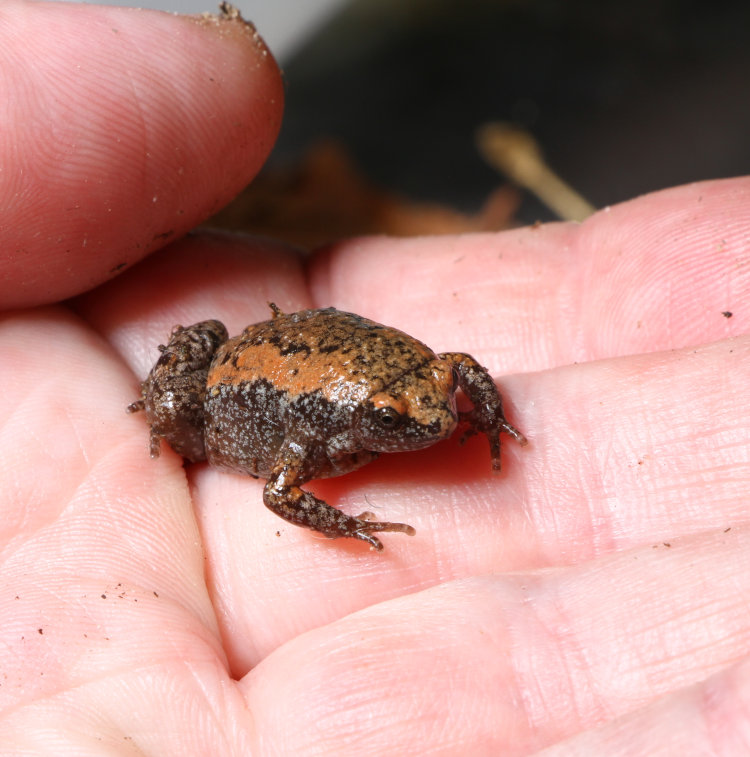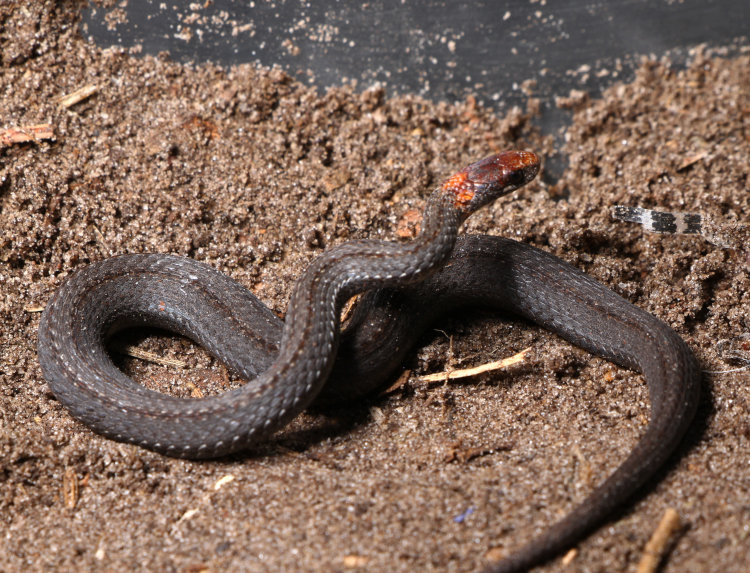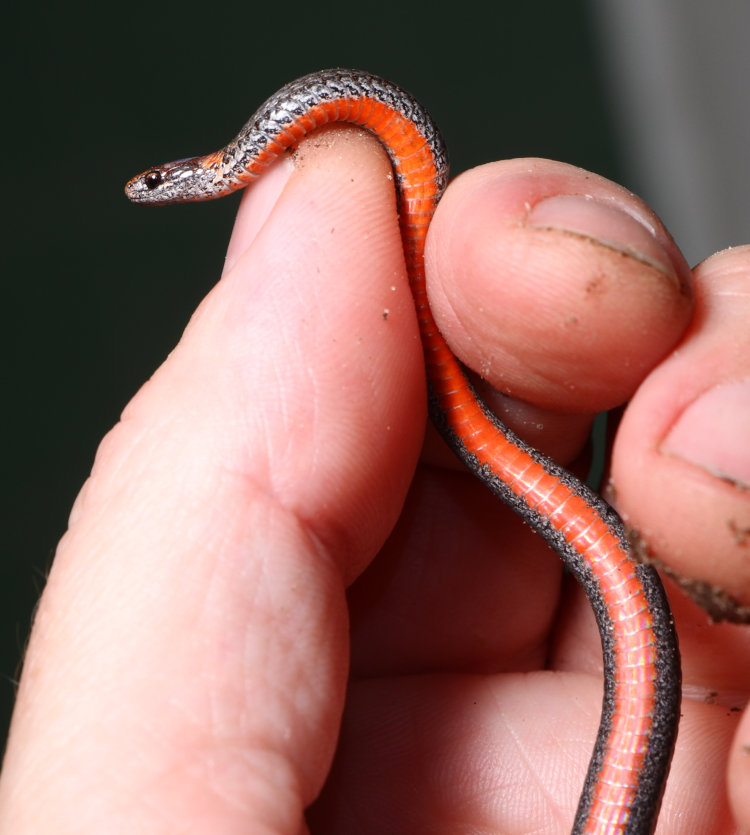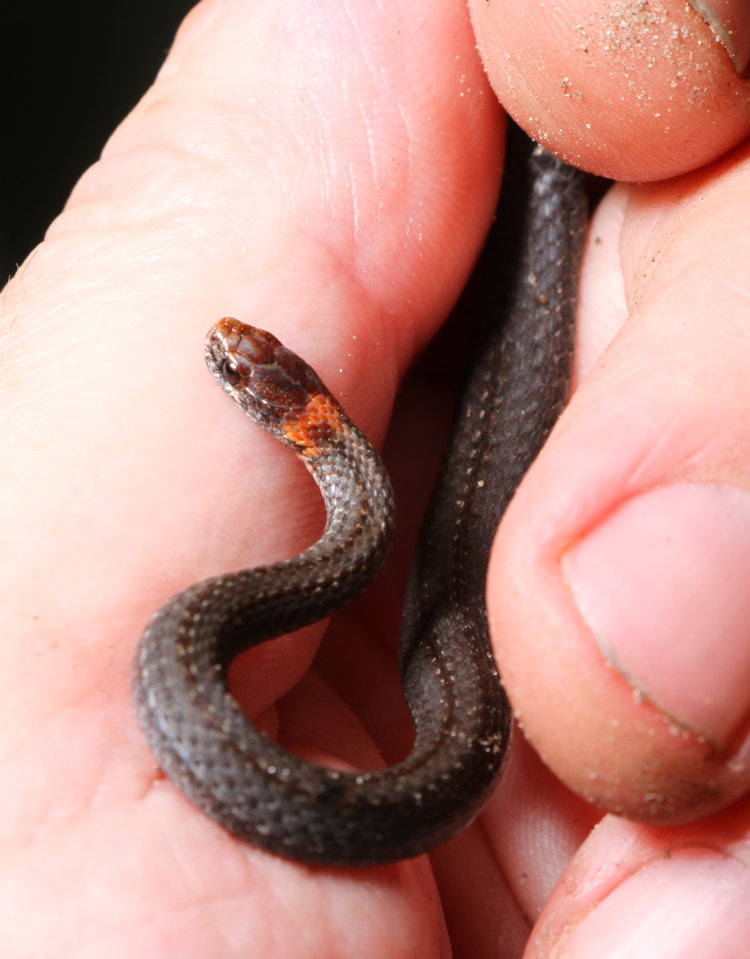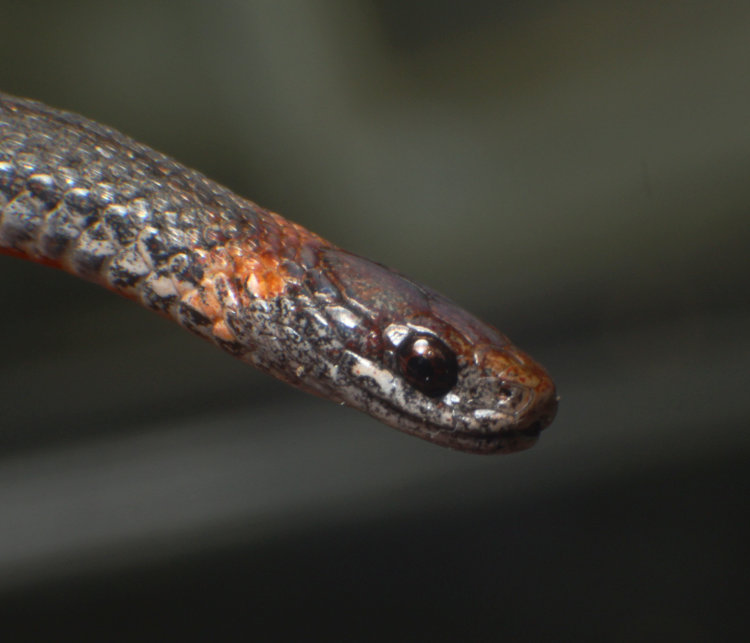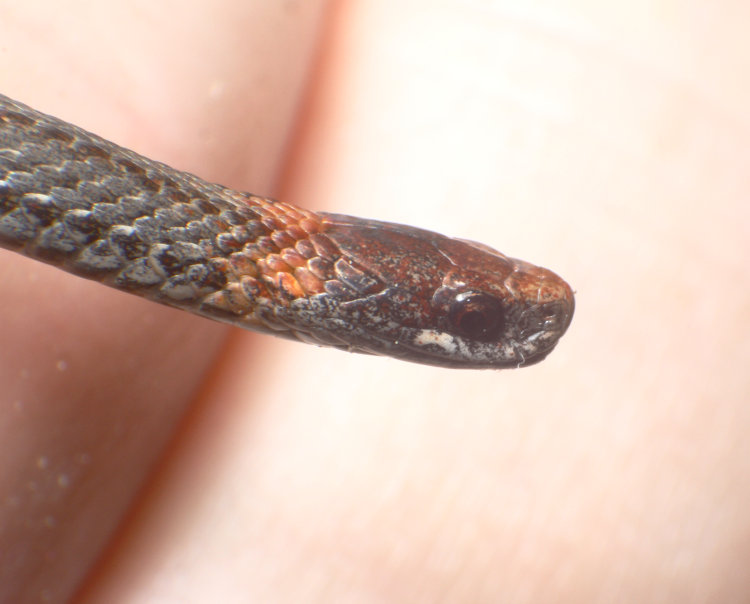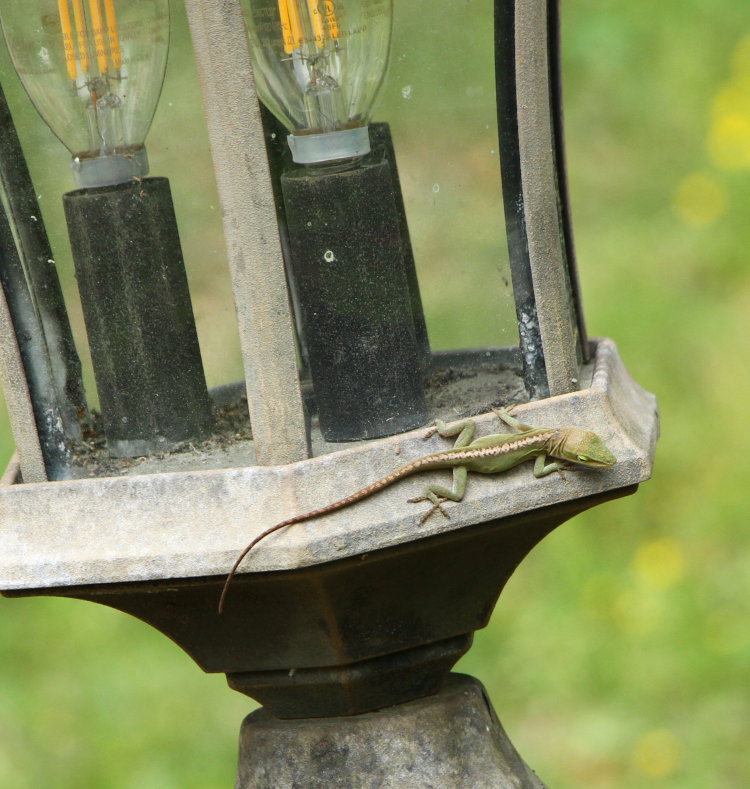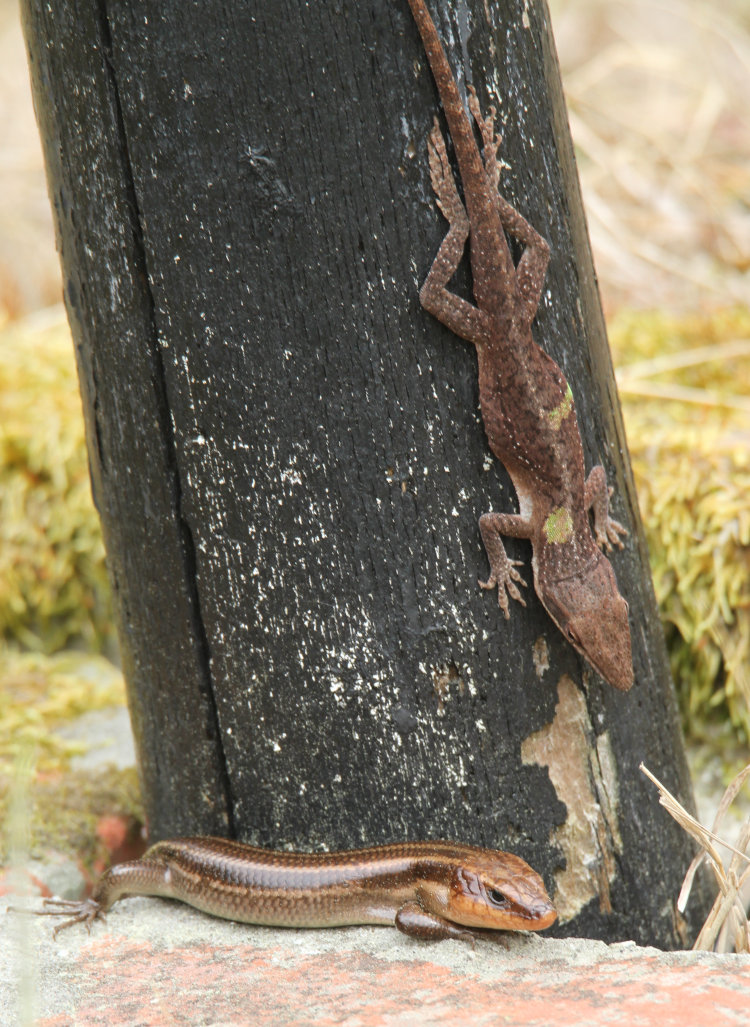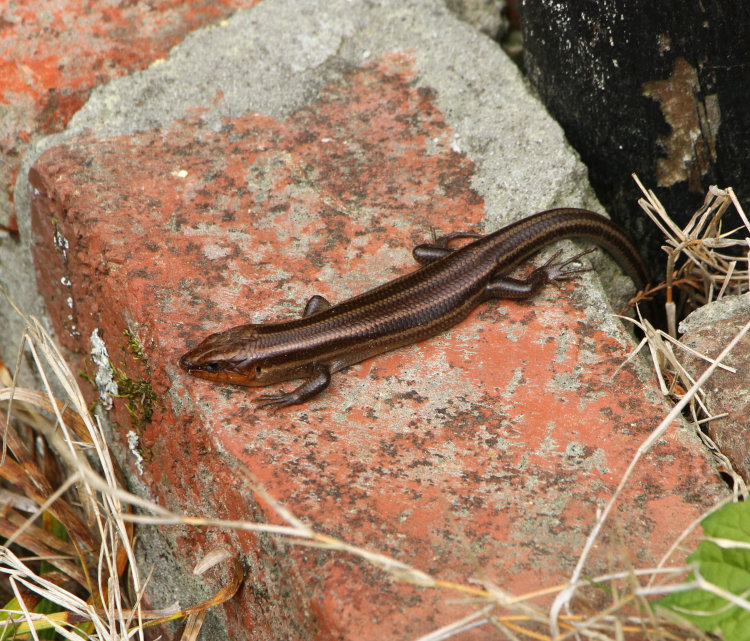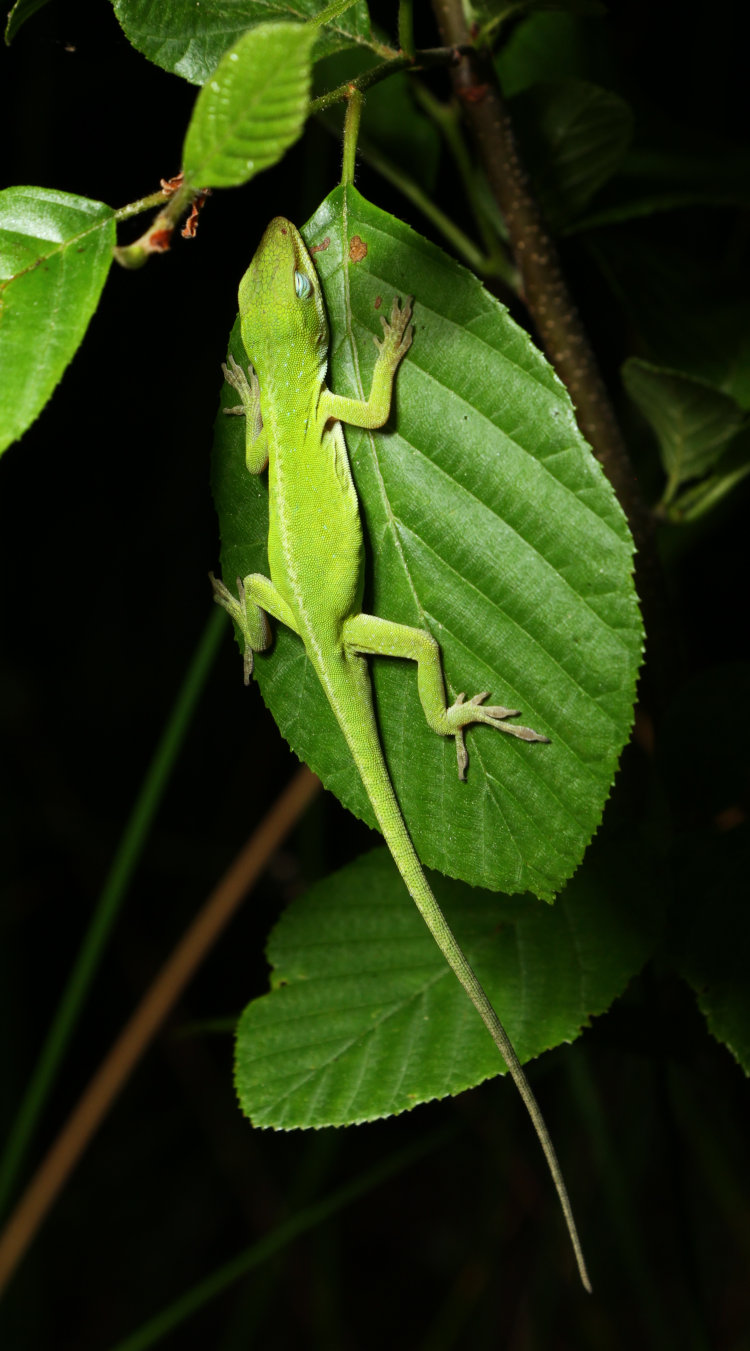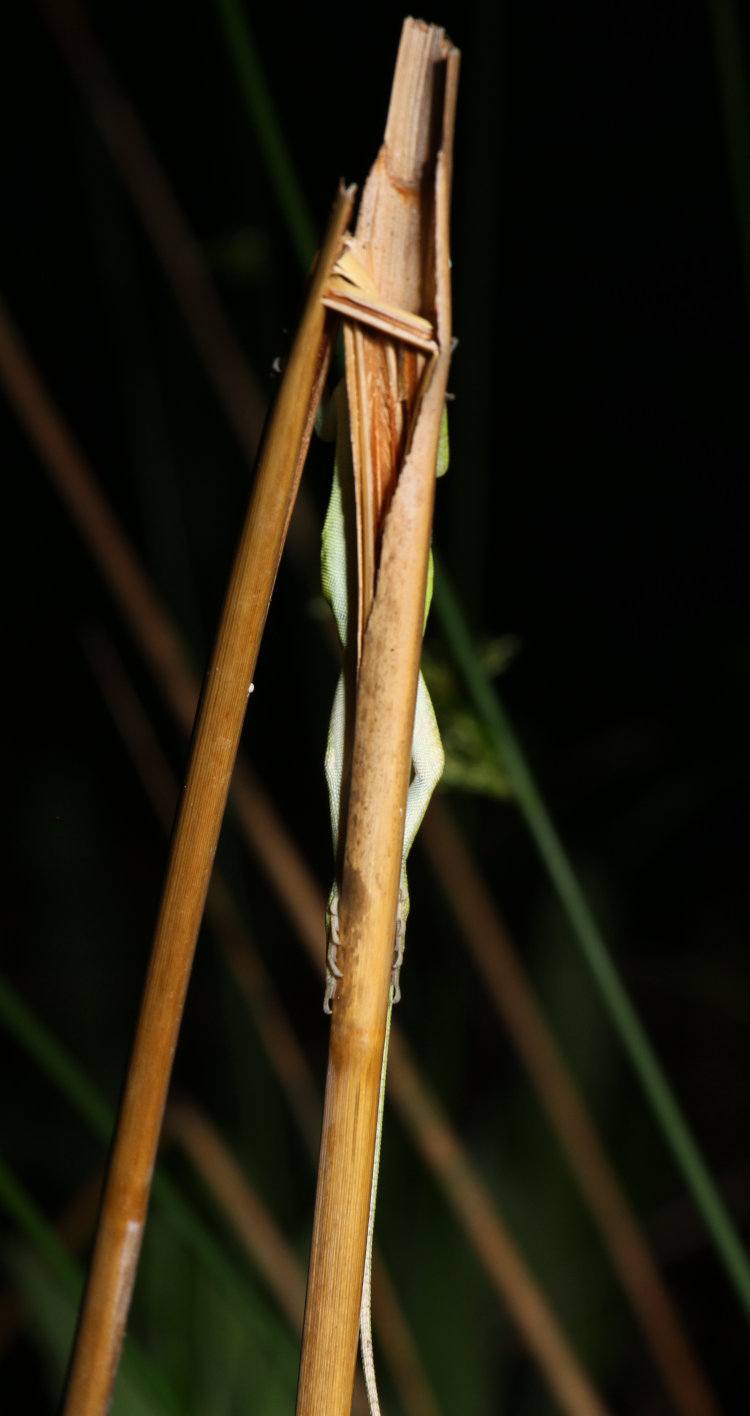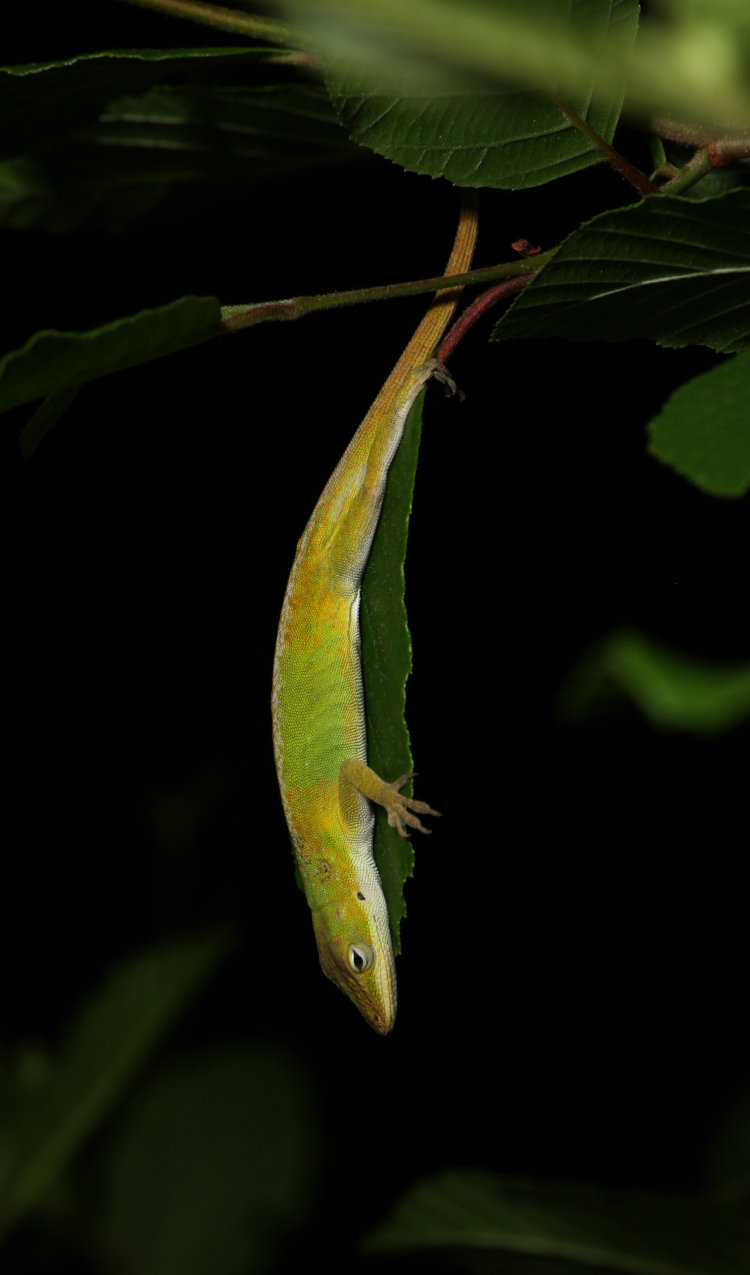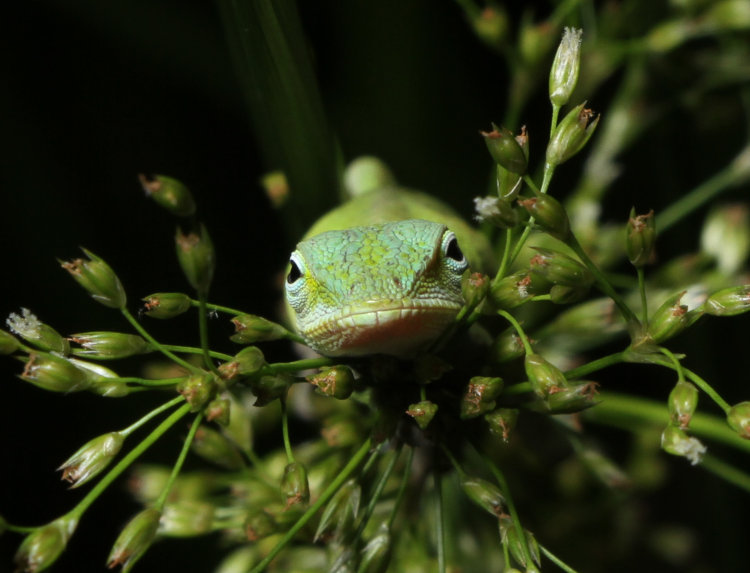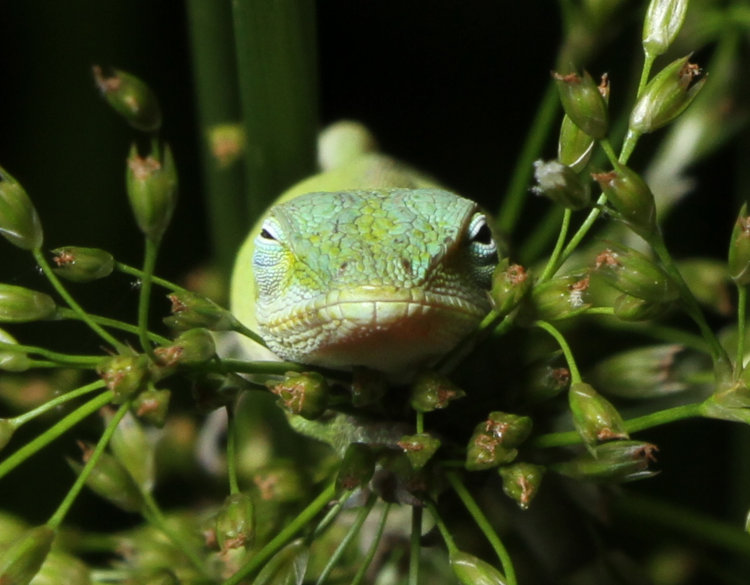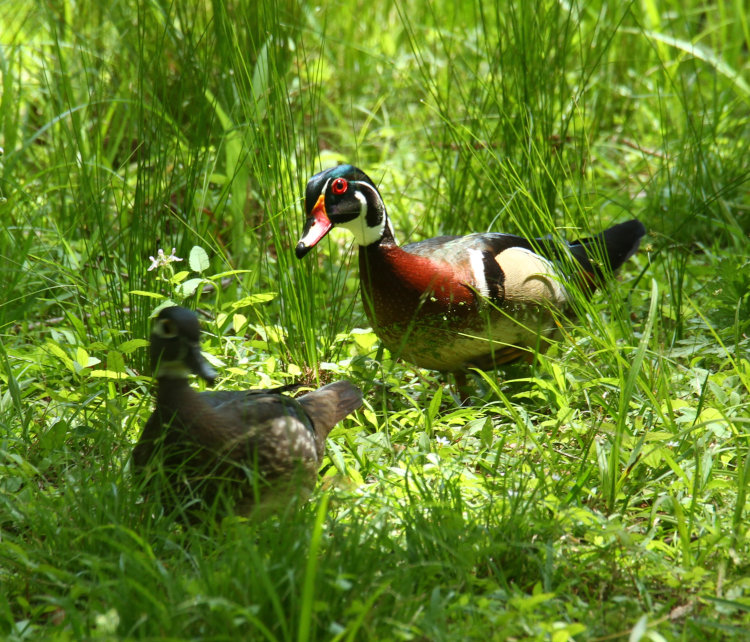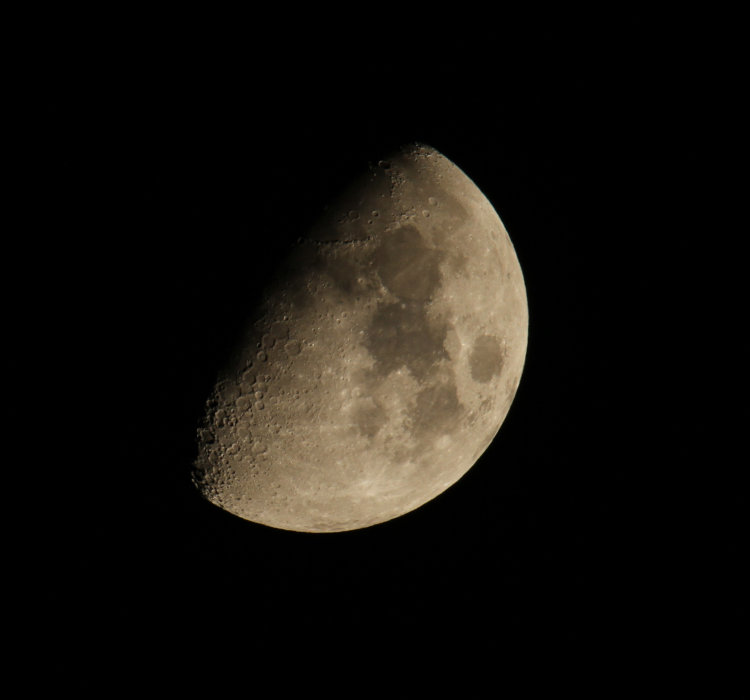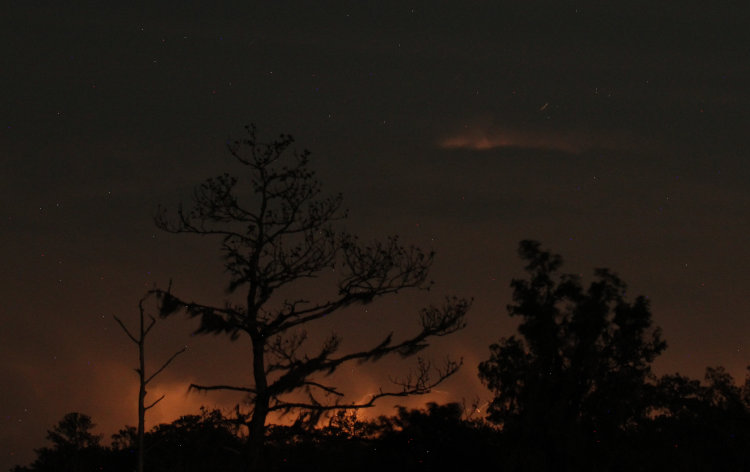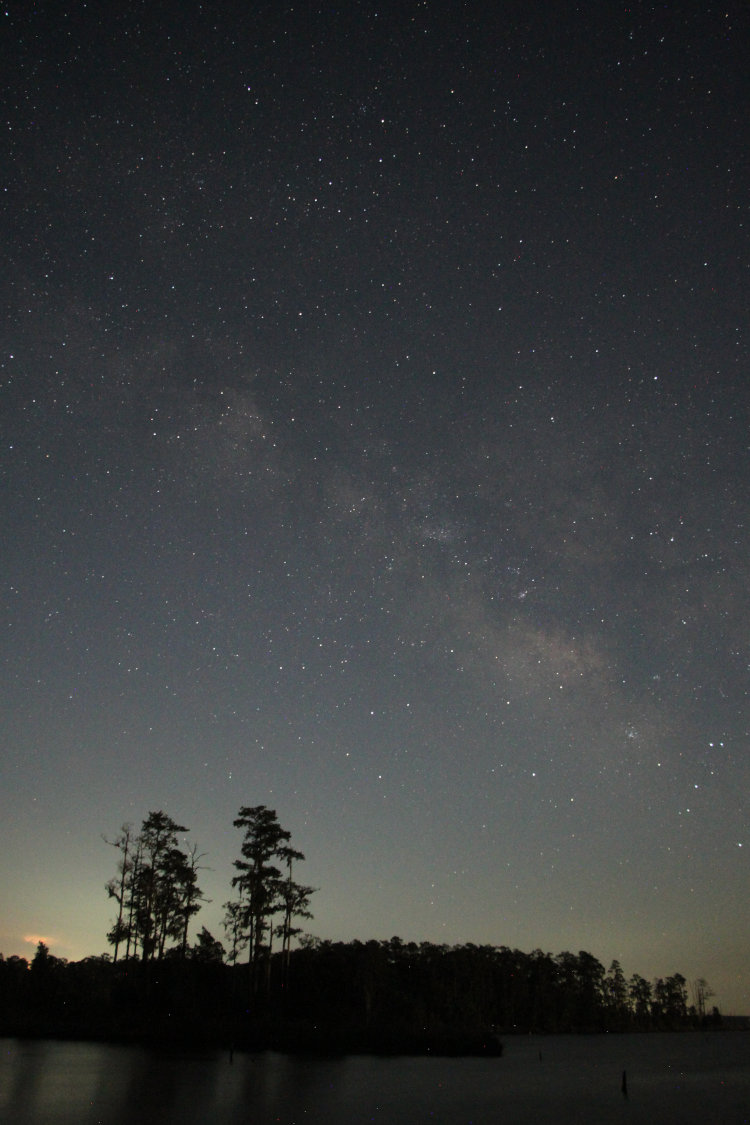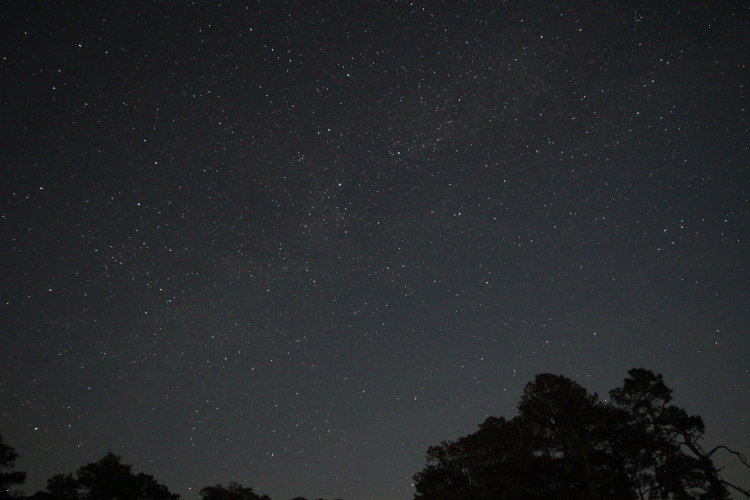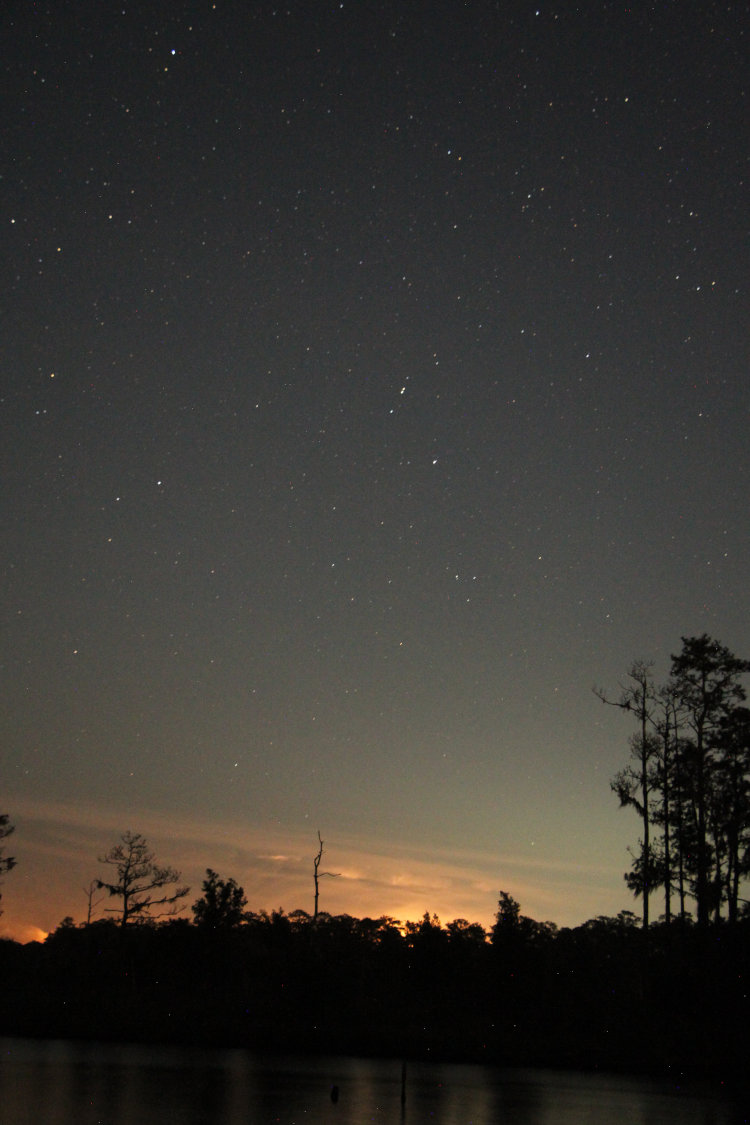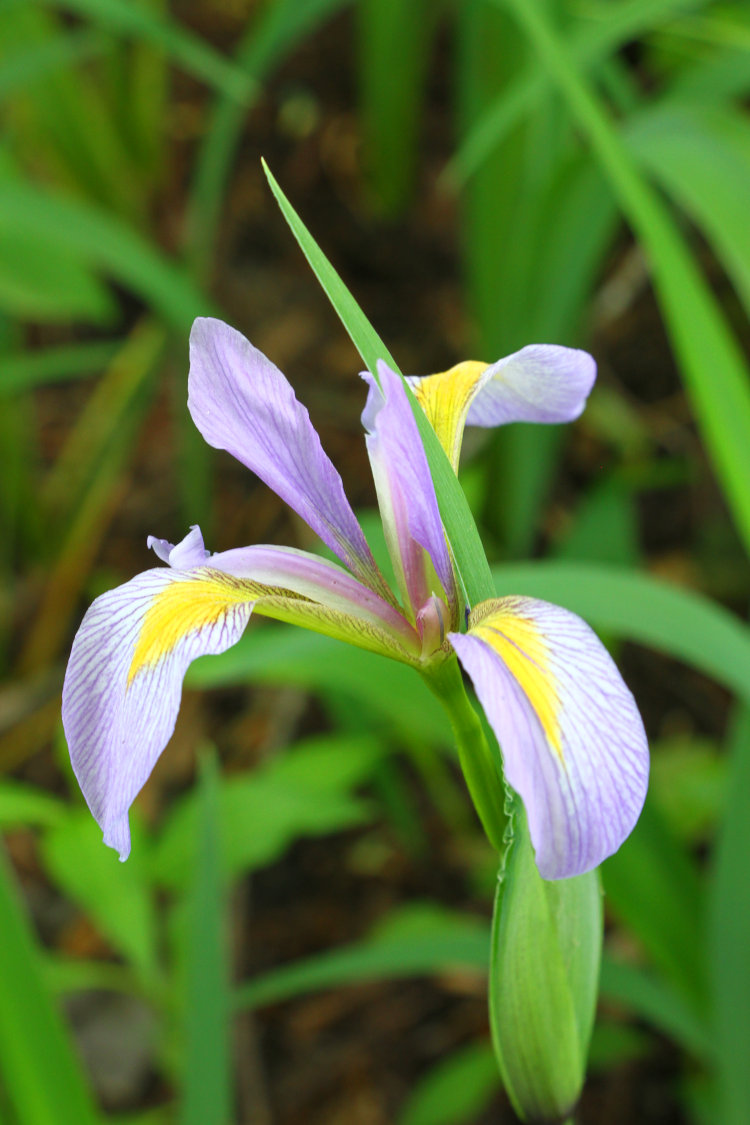Did I observe World Migratory Bird Day, you’re asking? Did I even complete the goal I set out for myself in an earlier post? Well, yes, though I actually had two, and one remains only half-completed.
First off, two days before the holiday, I was surprised to suddenly see a female wood duck shoot into the nest box without warning, revealing that it was currently in use, and so one of the goals was to confirm this with photos or video. And while I was staking that out, sitting in the yard some thirty meters off with the long lens trained on the nest box, I completed the other goal.

While obtaining nothing dramatic or even fartistic, I snagged enough images of the frequent visitor to confirm that it is indeed a Mississippi kite (Ictinia mississippiensis,) which aren’t typically found here, though we’re not far outside their plotted range.
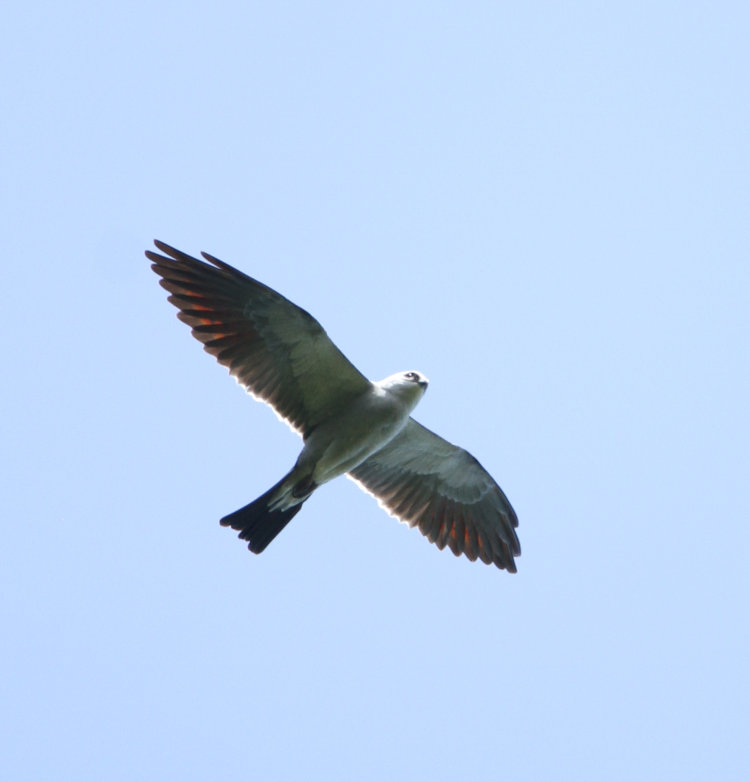
That’s enough color detail to nail the ID down, and I’m pleased that it chose to wheel directly overhead while I was sitting out there (and that I glanced up at the right time to spot it.) These pics were taken straight up while I should have been watching the wood duck nest box, but this was a goal and I needed to fulfill it. While I have no idea how many there are, or if there’s a nest, et cetera, I see one overhead frequently enough that I’m sure it’s staying in the immediate area. I’ll keep you posted with any better pics.
As for the other goal? We’ll let the video cover that bit.
And a few photos done outside of the video clips.
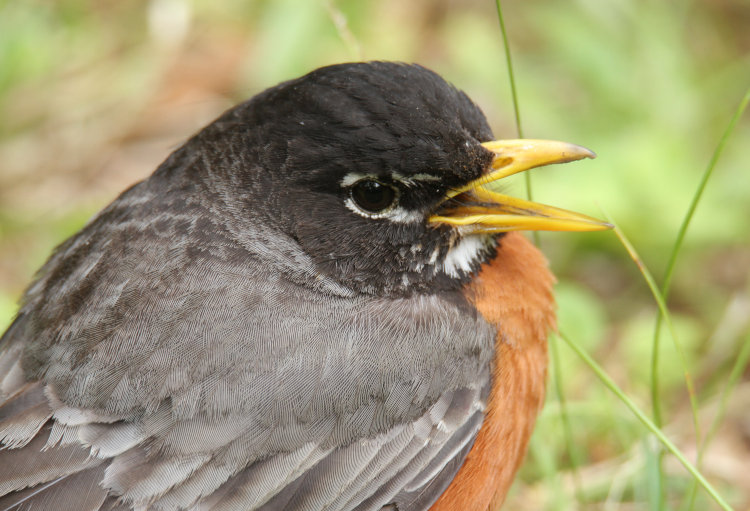
Like I said in the voiceover, I believe this is simply a juvenile American robin (Turdus migratorius) out of the nest less than two days, still expecting to be fed, though I never saw any sign of parents – and may not have, if they were trying to get junior here to feed on its own. While I had initially suspected this guy was suffering from Avian Influenza, it matches no symptoms and has more of a juvenile appearance. Am I seeing the barest hint of remaining baby down around the neck, in that video? You decide.
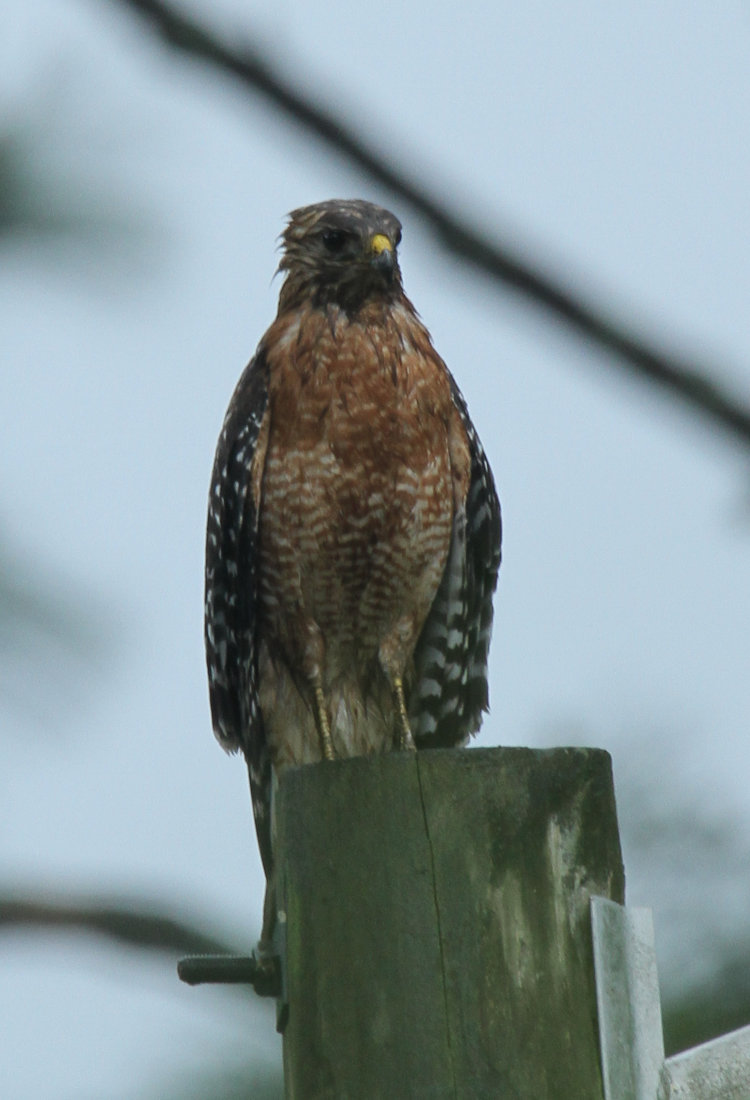
While the winter was full of sightings of a pair of red-shouldered hawks (Buteo lineatus,) by early spring these had largely stopped, and the nest went unfinished, but we were hearing their calls down near The Bayou and so believe they’d simply constructed a new nest down there. Abruptly, however, one has made some recent appearances in the yard, and we believe it’s trying to snag one of the wood ducks that come up for feeding a few times a day – I saw some actions that almost confirmed this. Let me tell you, The Girlfriend is definitely conflicted about this. She was following the hawks’ appearances almost as closely as I was, and was delighted to see them building a nest right in the backyard, but then they disappeared and we started following the wood ducks. I’m sure she favors the ducks now, and while she recognizes that this is simply the balance of nature and how the duck population is managed, she’s not going to be happy to find that the hawk has snagged a meal or two. And by the way, this pic is from the same day in the video where it simply poured all day long.
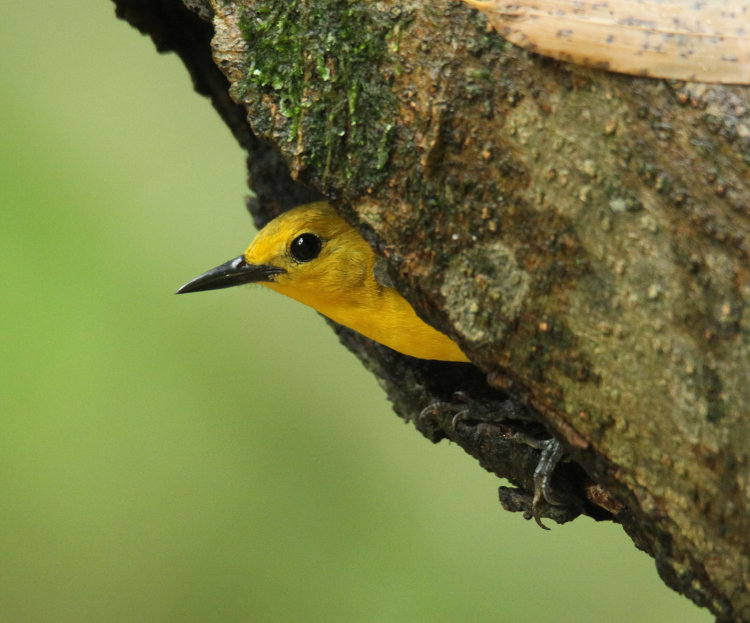
A better look at the prothonotary warbler (Protonotaria citrea) as it peers from the nest. I believe both the male and the female were visiting the nest, but the male was at least nearby and making a fair amount of noise, which is what drew my attention in the first place as I was out scouting for beavers. My position to achieve this shot was slightly precarious, a little too close to the stream edge, and I was having flashbacks of last year’s World Migratory Bird Day – this is certainly as good as I’m going to see the nest, but perhaps I can stake it out and see the young fledging out.
And finally,
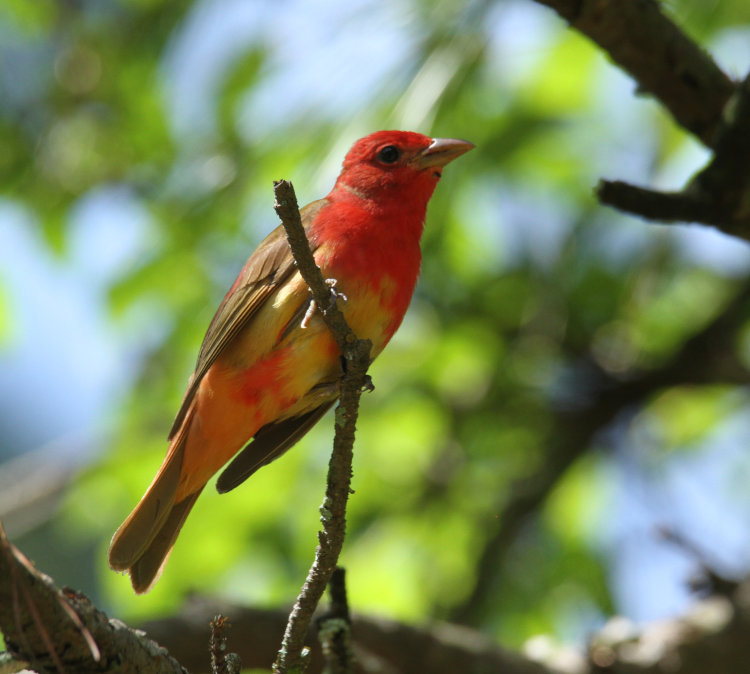
While I was watching the wood duck nest box, and getting the video of both the red-shouldered hawk and the American robin, and getting the confirmation pics of the Mississippi kite, this one landed high in the tree nearby, and so I once again detached the camera and long lens from the tripod to aim towards a new subject. Video was out of the question because of the high angle needed and my inability to adjust the tripod like that without spooking the bird, which was quite close. This is a summer tanager (Piranga rubra,) showing the mixed colors that occur as a juvenile molts into adult plumage, and while I would have liked to have had a little better light on the bird, at least the plumage and background colors work well together.
Meanwhile, I never did capture the wood duck entering the nest box, and after a couple of long stakeouts with no activity whatsoever, I’m suspecting that at some point when I wasn’t watching, the young had hatched out and they all bailed the nest, which apparently occurs very soon after hatching; unlike other birds, the mother does not feed the young with regurgitated food, and instead they’re out foraging from the start. So I’m now watching for both signs of her return or evidence that she’s leading a brood around someplace. As always, you’ll see updates right here as I get them.





















































